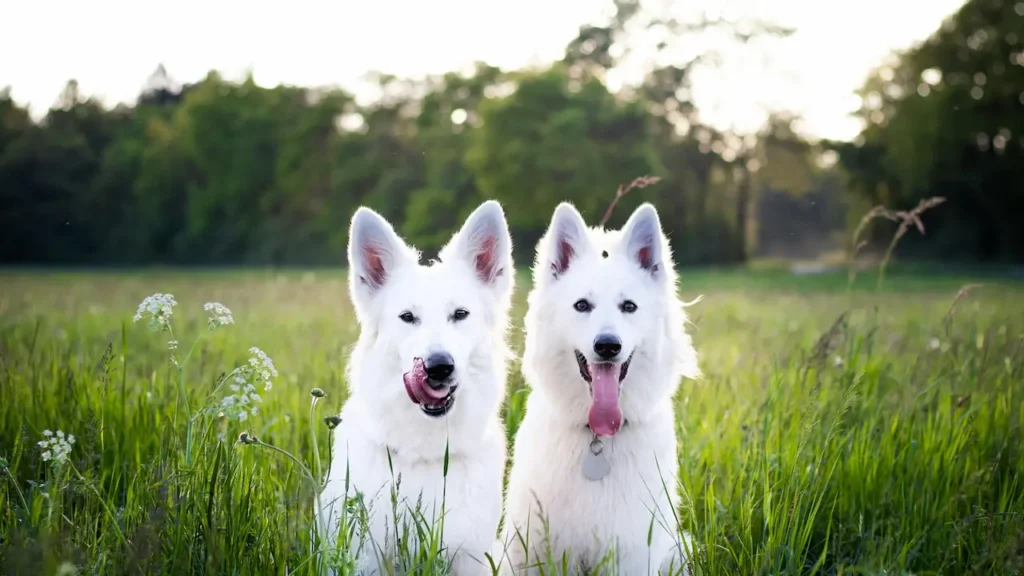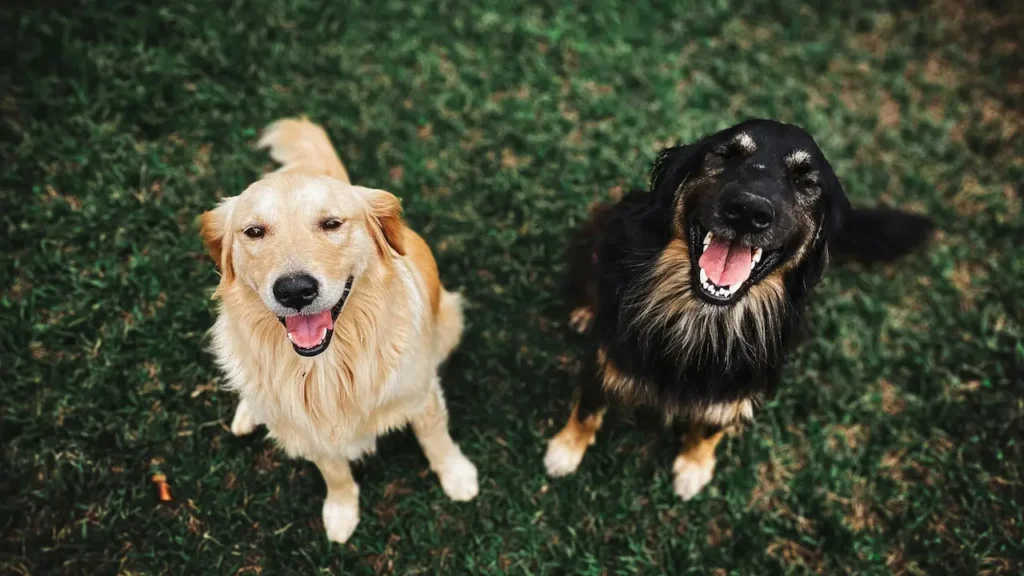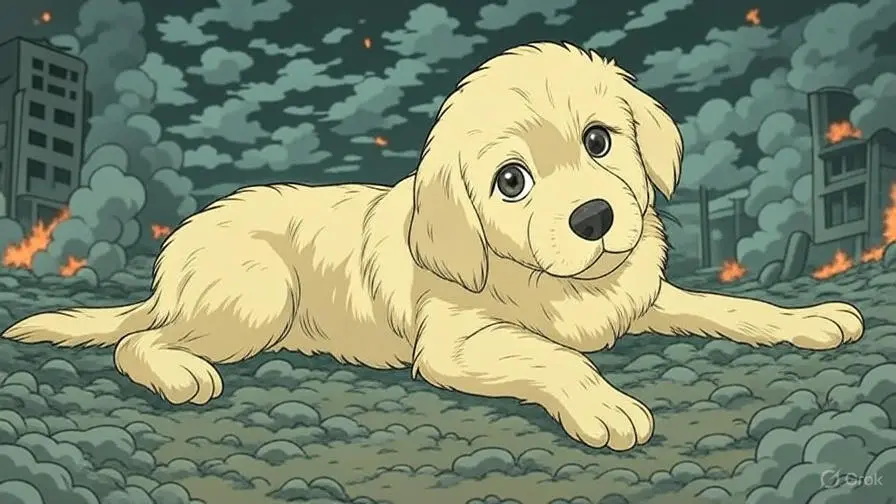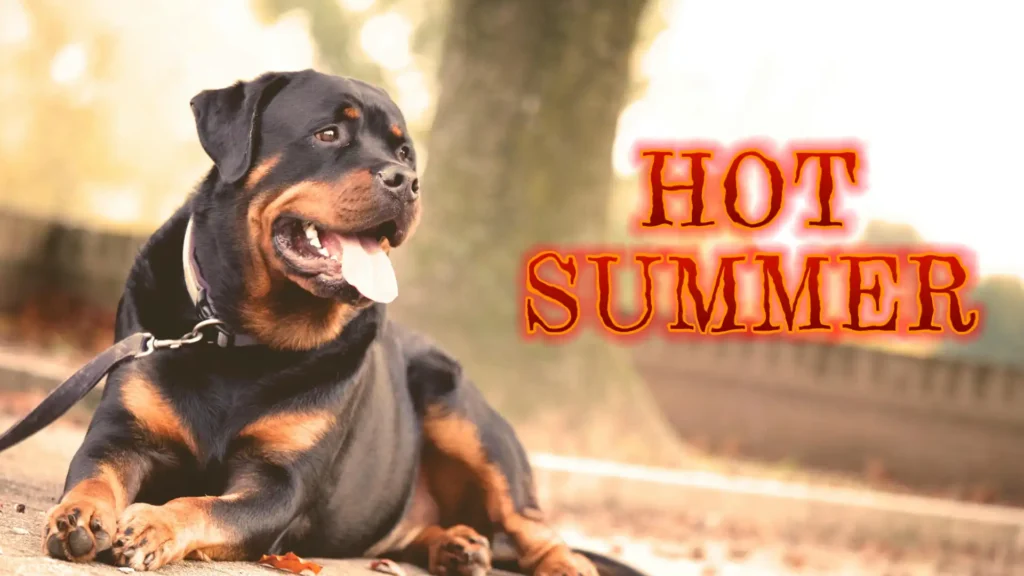Reactive dogs are often misunderstood. Their growling can be intimidating. It’s important to remember that reactivity is not always aggression. With the right training techniques, reactive dogs can learn to navigate their environment with confidence and calm. Here are some effective tips for training your reactive dog.
Understand the Root Cause of Reactivity
First, identify what triggers your dog’s reactivity. Reactivity is a symptom of an underlying issue. Understanding its root cause will allow you to address the problem effectively.
Fear-based reactivity stems from past traumatic experiences. A fearful dog perceives unfamiliarity as threats. This leads to bark, growl, or lunge in an attempt to create distance from the perceived danger.
To determine if fear is driving your dog’s reactivity, observe their body language. Signs of fear include cowering, tail tucking, excessive panting, dilated pupils, and attempts to flee. Addressing fear requires building trust. Create positive associations with the trigger through gradual exposure and counter-conditioning.
Some reactive dogs are motivated by excitement. These dogs become overly stimulated when they encounter certain stimuli. Their reaction isn’t necessarily aggressive. It reflects their inability to control their impulses.
They haven’t learned how to channel their energy appropriately. This type of reactivity is common in high-energy breeds. Teaching impulse control exercises (help these dogs learn to stay calm in exciting situations.
Frustration-based reactivity occurs when a dog wants something but cannot access it. Frustrated dogs typically display behaviors like whining, pacing, and intense pulling. They also exhibit redirected aggression.
Managing this type of reactivity involves teaching the dog alternative ways to cope with their emotions.
Each type of reactivity requires a slightly different approach. A fearful dog needs careful desensitization and counter-conditioning to build confidence. An excited dog benefits from structured impulse control training and increased exercise. A frustrated dog may need opportunities to safely interact with their triggers under controlled conditions.
By identifying the specific cause of your dog’s reactivity, you can tailor your training plan to meet their unique needs and set realistic expectations for progress.
Create a Safe Environment for Your Dog
An anxious dog cannot focus on learning. Create a safe environment is essential during the initial stages of training. Reduce exposure to triggers. This allows your dog to relax and prevents overwhelming situations.
At home, use crates to give your dog a sense of security. These spaces should be free from distractions and accessible. Set up a cozy crate with soft bedding and toys to serve as a retreat. Use baby gates to block off rooms where your dog might encounter triggers.
These measures help your dog feel in control of their surroundings. This reduces stress and builds confidence over time.
Avoid places that are likely to trigger reactivity. Busy parks, crowded streets, and dog-heavy neighborhoods can be overwhelming for a reactive dog.
Opt for quieter locations for training. Gradually reintroduce your dog to busier environments.
Daily walks can also expose your dog to numerous triggers. To minimize stress, plan routes that avoid known triggers. Keep walks short and focused on training rather than long-distance exploration. Carry high-value treats and a comfortable harness to maintain control. Provide rewards for calm behavior.
Focus on Desensitization and Counter-Conditioning
Desensitization and counter-conditioning are two powerful techniques to change a dog’s emotional response to their triggers. Together, these methods aim to replace fear, excitement, and frustration with.
Desensitization involves gradually exposing your dog to their trigger at a low intensity. The goal is to keep your dog below threshold. If your dog reacts to other dogs, start by observing them from a great distance. As your dog becomes comfortable at that distance, slowly decrease the gap between them and the trigger over multiple sessions.
The key to success is moving at your dog’s pace. Rushing the process can backfire and make their reactivity worse.
Counter-conditioning pairs the trigger with something rewarding. Over time, your dog learns to associate the presence of the trigger with good things. This changes their emotional response.
This technique helps shift your dog’s mindset from “That thing scares me” to “That thing makes yummy treats appear!”
For best results, combine desensitization and counter-conditioning.
Start by presenting the trigger at a safe distance (desensitization), then reward your dog generously for calm behavior (counter-conditioning). Repeat this process consistently. Adjust the distance based on your dog’s comfort level.
Teach Impulse Control Exercises
Impulse control exercises teach your dog how to manage their emotions and resist acting on instinctive urges. These activities improve your dog’s ability to regulate themselves.

The “Leave It” command teaches your dog to ignore distractions. Here’s how to train it:
- Place a treat in one hand and close your fist around it.
- Hold your closed fist near your dog’s nose and wait for them to stop sniffing at it.
- As soon as they look away, say “Yes!”. Then reward them with a treat from your other hand.
- Gradually increase the difficulty by placing the treat on the floor while covering it with your hand. Then eventually leave it uncovered.
Once mastered, “Leave It” can be used to redirect your dog’s attention away from triggers.
“Wait” and “stay” commands teach your dog patience and self-control. Practice “Wait” before crossing thresholds, feeding meals, and exiting the car. Use “Stay” to encourage your dog to remain calm in specific positions.
Both commands provide structure and prevent your dog from rushing toward triggers impulsively.
Use hand targeting. This involves teaching your dog to touch their nose to your palm on cue. This simple exercise redirects your dog’s focus onto you and away from distractions.
To train it: hold your open palm about six inches from your dog’s nose. When they move forward to touch your hand, mark the behavior with a verbal cue (“Touch”), then reward them. Gradually increase the distance between your hand and your dog to make the exercise challenging.
Use Positive Reinforcement
Positive reinforcement is one of the most effective and humane approaches to dog training, especially when working with reactive dogs. It involves rewarding your dog for displaying desired behaviors, which encourages them to repeat those actions in the future. This method not only strengthens the bond between you and your dog but also fosters trust and confidence.
Dogs become motivated by rewards. Reactive dogs are already dealing with heightened emotions. Adding punishment into the mix exacerbate their stress.
Use positive reinforcement to train your reactive dog. Reward your dog immediately after they display the desired behavior. For example, if your dog looks at a trigger and remains calm, mark the moment with a verbal cue (“Yes!”). Then offer a high-value treat.
Choose rewards that your dog finds motivating. Save these special rewards exclusively for training sessions to maintain their appeal.
Reinforce calm and focused behavior consistently. Over time, your dog will learn that staying relaxed earns them rewards.
Practice Loose-Leash Walking
Reactive dogs struggle with leash tension. This can escalate their stress and make reactivity worse. Teach your dog loose-leash walking. It ensures your dog feels comfortable during outings and gives you greater control in challenging situations.
A tight leash signal to your dog that there’s something to be worried about. It heightens their arousal levels. Additionally, pulling puts pressure on their neck and throat. This adds discomfort and frustration to an already stressful situation.
Follow these steps to help your dog master loose-leash walking.
Whenever the leash becomes tight, stop walking immediately. Stand still until your dog relaxes and the leash slackens. Once the leash is loose, resume walking.
Praise and reward your dog whenever they walk calmly beside you with a loose leash. Use treats, verbal praise, and gentle petting to reinforce this behavior. Incorporate frequent turns and changes in pace to keep your dog engaged and focused on you. This technique prevents them from fixating on triggers.
Start practicing loose-leash walking in quiet environments. Gradually introduce distractions as your dog improves.
Manage Energy Levels Through Exercise
Excess energy contributes to over-the-top reactions. Physical exercise and mental stimulation help burn off steam and promotes relaxation. This reduces the likelihood of impulsive behavior.
Take your dog on extended walks to tire them out physically. Avoid busy parks until your dog has developed better coping skills. Fetch and tug-of-war are excellent outlets for pent-up energy. These activities allow your dog to release excitement in a controlled manner. If your dog enjoys water, swimming is a great full-body workout that’s easy on the joints.
In addition to physical exercise, mental enrichment is crucial for tiring out your dog’s brain. Engage your dog’s mind with puzzle toys. Interactive toys encourage problem-solving and keep your dog entertained. Hide treats around the house or yard and let your dog search for them.
Practice basic commands like “Sit,” “Stay,” or “Come” in fun and creative ways. You can turn obedience training into a game by incorporating obstacles. Teach new tricks. These challenge your dog mentally. Tricks like “Spin,” “High Five,” or “Roll Over” are fun and rewarding for both of you.
Reactive dogs aren’t bad dogs. They’re simply communicating their discomfort in challenging situations. By understanding their needs and implementing these training tips, you can empower your dog to overcome their fears and thrive in everyday life.




